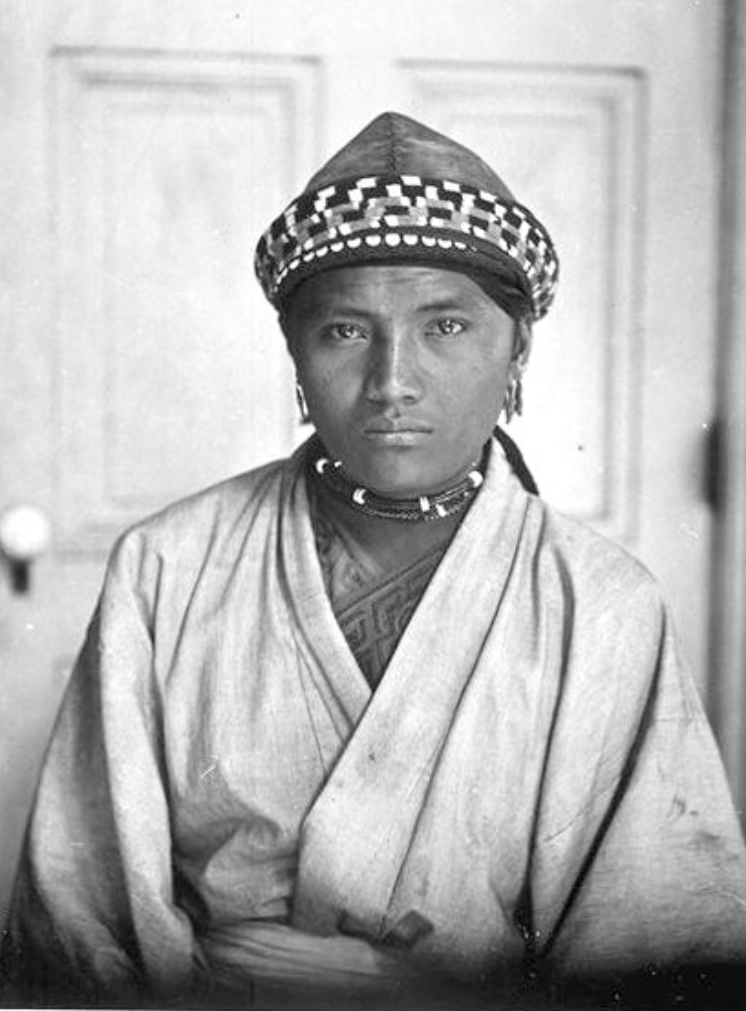Sword Knife “takit”
These two small sword knives takit represent a relatively recent type of Taiwanese weapons, which were common among the Rukai and Paiwan aristocracy at the turn of the 19th and 20th centuries. The knives were intended as gifts between high-ranking members of the important clans and continue the old form of the rinadrug fighting sword. The manufacturing suggests Chinese-dominated professionalisation. The symmetrically arranged handles show metal and mother-of-pearl inlays, which in their entirety represent a standing human figure with hair – the standing narrow bars on the handle crown. The blades, ground on one side, are made of high-quality hardened steel and their shape is clearly Chinese in character. The narrow bands on the back of the sheaths, some of which are decorated in detail with Chinese characters or floral and other filigree motifs, illustrate the production by Chinese “professionals”, as the motifs are atypical for Paiwan art. These ribbons and the bars that hold the knives in the sheaths open on one side were popular commercial goods in Taiwan’s late colonial period.
The three-lobed foot of the sheaths is a reminiscence of the Mura head, which turns the knife or sword into a skinning snake. The fact that swords are equated with snakes is a widespread motif throughout the entire Euro-Asian region and symbolically has a considerable depth, as the sword as a “killing object” is assigned to the underworld, i.e. the world serpent, because it sends taken life and the underworld and therefore promotes the cyclical renewal of life by the warrior, the “backbone” of the warlike Austronesian tribes. It was therefore also of particular importance for initiation and manhood, because only the successful headhunter was considered capable and entitled to procreate. The tattoos that the initiated noble members of society wore are also backed with snake symbolism; they are to be interpreted as skin and body parts of the snake. They make the wearers visible as descendants of the holy “100-step snake”, which in primeval times had introduced the social order and ritualised warfare with head hunting.
| Object | Sword knife “takit” , “rinadrug” |
| Culture | Paiwan (Puyuma), Rukai culture |
| Time | Beginning of the 20th century (?) |
| Dimensions | Length: 36 cm |
| Material | Steel, wood, non-ferrous metal, mother of pearl |


Chief of the Rukai people
http://www.muse.or.jp/torii/taiwan/img05_rukai/640/7245m.jpg
Supplementing Literature Back to room view



